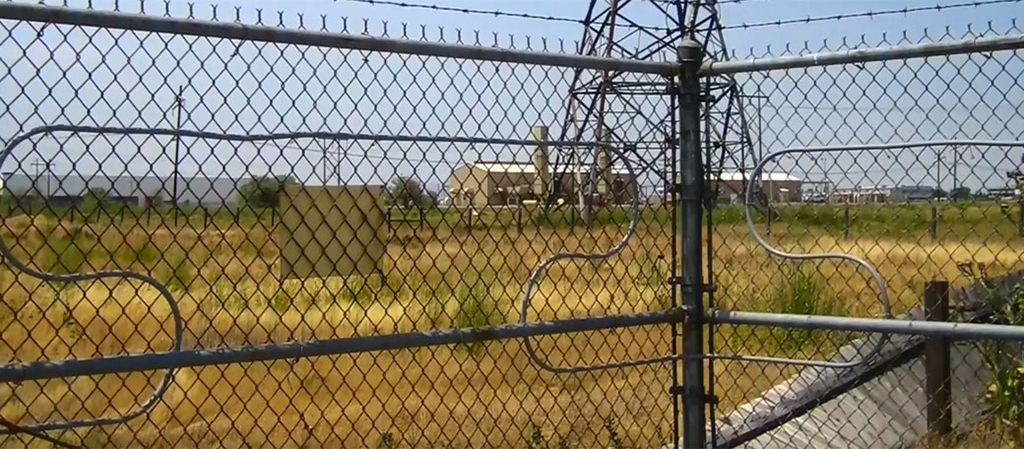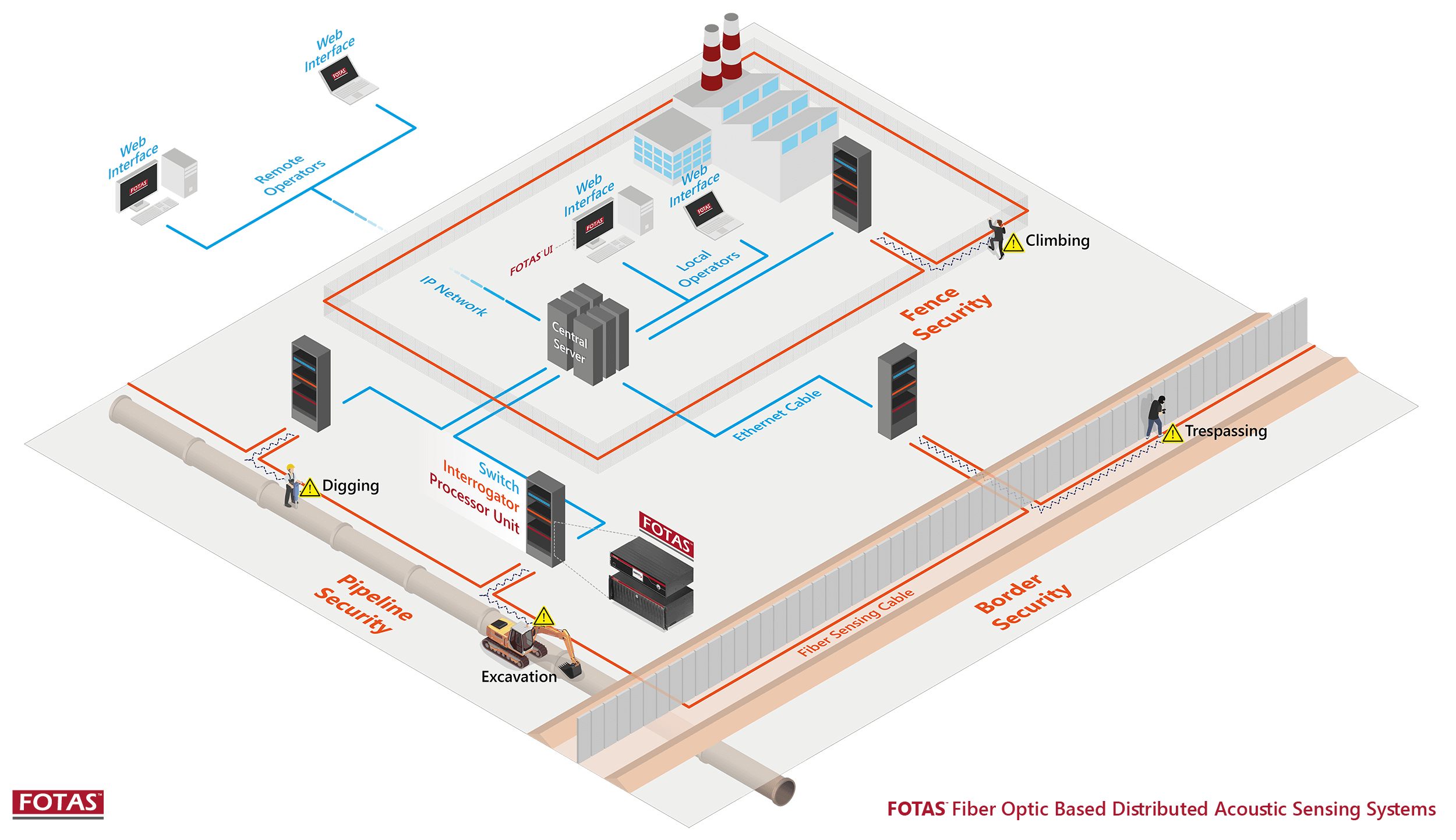Top Reasons a Fiber Security System Outperforms Traditional Security Networks
Top Reasons a Fiber Security System Outperforms Traditional Security Networks
Blog Article
Why Fiber Optic Protection Solutions Are the Future of Security
The change to fiber optic safety systems marks a substantial improvement in the world of defense, driven by their extraordinary information transmission capabilities and strength to exterior disturbances. These systems not just facilitate faster and more trustworthy interaction yet likewise offer a cost-effective option with minimized upkeep needs. As the landscape of safety evolves together with emerging modern technologies such as AI and IoT, the potential for fiber optics to improve and redefine protection facilities becomes significantly obvious. Nevertheless, the implications of these advancements elevate essential inquiries regarding the future of safety and security actions and their efficiency in an ever-changing setting.
Advantages of Fiber Optic Equipments
Among the main benefits of fiber optic systems is their exceptional data transfer capacity, which facilitates the transmission of big quantities of information over cross countries without considerable loss. This characteristic is specifically advantageous for safety applications that call for the continual tracking and transfer of high-def video clip feeds, sensing unit information, and various other critical info. Optical fiber can suit the expanding needs of modern security systems, making sure that data remains undamaged and reputable.
In addition, fiber optic wires are less prone to electro-magnetic disturbance, which can be a substantial problem in settings with numerous electronic devices. This resistance boosts the honesty of the information being sent, consequently minimizing the risk of data breaches or system failings. Moreover, fiber optic systems are inherently a lot more secure than standard copper cable televisions, as tapping into a fiber optic line without detection is exceptionally difficult.
The toughness of fiber optic cables likewise adds to their charm. They are immune to ecological elements such as moisture and temperature variations, lowering maintenance expenses and raising system durability. Overall, these benefits position fiber optic systems as a robust and efficient choice for contemporary safety infrastructures, making certain reliable and safe information transmission.
Boosted Information Transmission Rate

The ability to transfer vast amounts of data quickly facilitates the seamless combination of high-def video feeds and progressed analytics. Safety and security systems can now refine and assess information in real-time, boosting feedback times and situational awareness. Furthermore, fiber optic connections sustain longer transmission distances without degradation of signal high quality, making them suitable for expansive protection networks.
The raised rate of fiber optic systems not only improves the efficiency of safety and security operations yet additionally decreases latency. This is especially essential in important circumstances where prompt decision-making can prevent safety and security violations or minimize prospective risks. As companies remain to focus on safety and security and effectiveness, the demand for quick and trustworthy data transmission will link definitely solidify fiber optic systems as a keystone of modern safety and security infrastructure.
Resistance to Interference
Fiber optic protection systems consistently demonstrate extraordinary resistance to electro-magnetic interference, a critical benefit in environments vulnerable to digital sound. Unlike standard copper wires, which can be adversely affected by magnetic fields, radio regularity interference, and various other forms of electric disturbance, fiber optic cable televisions utilize light to send information. This intrinsic building guarantees that the signals continue to be clear and unaltered, no matter bordering digital activity.
Making use of glass or plastic fibers in fiber optic modern technology creates an obstacle against disturbance, permitting reputable data transmission resource even in challenging circumstances such as commercial centers, city locations with high electronic website traffic, or areas near radio towers. This particular dramatically reduces the probability of signal destruction or loss, making fiber optic systems specifically appropriate for protection applications where stability and precision of data are critical.
In addition, this resistance to interference improves the general performance and integrity of protection systems, ensuring that monitoring and alert systems function perfectly. In a world where security is increasingly threatened by advanced technologies, the durability of fiber optic systems sticks out as a pivotal attribute, reinforcing their standing as a vital part of contemporary security infrastructure.
Cost-Effectiveness With Time
Substantial expense savings can be attained with time with the execution of fiber optic security systems. While the preliminary investment may seem higher compared to conventional copper-based systems, the long-lasting financial advantages emerge with decreased functional and upkeep prices (fiber security). Fiber optic cable televisions are naturally much more sturdy and less at risk to environmental variables, which translates to lower substitute and repair expenses over their life expectancy
Moreover, fiber optic systems require much less power to operate, which better lowers power expenses. Boosted information transmission abilities permit fewer repeaters and amplifiers, lessening equipment investment and simplifying installation processes. The scalability of these systems additionally adds to cost-effectiveness, as companies can increase their protection infrastructure without incurring significant added expenditures.
One Our site more aspect to consider is the increased effectiveness in monitoring and reaction capabilities that fiber optics offer. Enhanced real-time information transmission can lead to quicker event response times, possibly mitigating losses and liabilities linked with security violations. Altogether, the long-lasting benefits of fiber optic security systems not only justify the first expenditure however likewise position them as a financially prudent selection for companies looking for robust defense remedies.

Future Technologies in Security
Advancing technologies are readied to revolutionize security systems, incorporating expert system (AI) and artificial intelligence to boost danger detection and action abilities. These advancements will permit security systems to analyze vast amounts of information in real-time, determining patterns and abnormalities that suggest potential hazards. This positive method will make it possible for quicker decision-making and much more efficient event reactions.
Additionally, the consolidation of the Internet of Points (IoT) is leading the way for interconnected safety and security tools, offering thorough monitoring and tracking. Smart sensors can pass on information about ecological changes, while automated signals can alert safety employees immediately of dubious activities.
In addition, the advancement of biometric innovations will certainly even more reinforce protection systems. Facial acknowledgment, fingerprint scanning, and retina identification are becoming much more advanced, giving layers of verification that are challenging to bypass.
Conclusion
Finally, fiber optic security systems represent a considerable innovation in defense modern technology, offering unparalleled data transmission speed, resistance to electro-magnetic interference, and long-term cost-effectiveness. As the need for advanced protection services remains to grow, the integration of fiber optics with arising innovations such as AI, IoT, and biometrics will certainly additionally boost security infrastructures (fiber security). The mix of these innovations will guarantee a much more safe and receptive setting, solidifying fiber optics as a keystone of future safety and security systems
Report this page